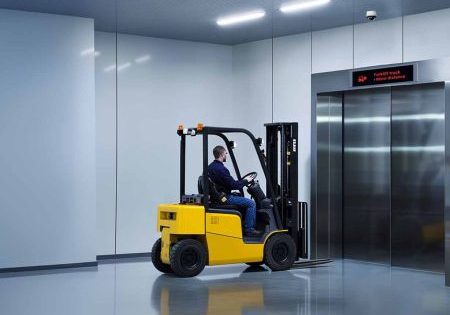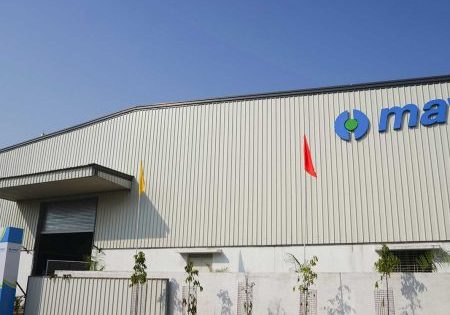Türkiye Lift Market: Growth, Competition and Strategic Roadmap
Mar 24, 2025

by Semih Çalık
There are some industries where transformation is difficult to notice if you are in those industries. The lift market in Türkiye has been going through such a process. We are actually talking about an industry which is not only composed of cars moving up and down but also has a central position in urban transformation, safety standards and sustainability.
In the midst of all this change, I would like to open a window on where the lift industry is, what opportunities it offers and what is missing.
Ups: Acceleration of Turkish Lift Market
According to reports shared by relevant institutions in Türkiye today, more than 800,000 lifts are actively operating, and this number continues to increase with an average of 35,000-plus new installations each year. According to estimates supported by sector analysts and market researchers, the market, which reached a size of EUR850 million in 2024, is expected to exceed EUR1 billion by the end of 2025.
What are the biggest factors that enable the industry to move up?
- Urban Transformation After Earthquake: The reconstruction process accelerated after the earthquakes on February 6, 2023, which we call the disaster of the century, and increased demand for modern, durable and smart lifts, especially in earthquake-prone regions. According to data from the Ministry of Environment, Urbanization and Climate Change, 700,000 houses are planned to be renovated from 2024 to 2026.
- Need for Modernization: One of every four lifts in Türkiye has either a red or yellow label, which means it is risky for use or requires a revision.
- The Power of Domestic Manufacturing: The market share of lift manufacturers in Türkiye has reached to 55%. New brands now focus not only on the domestic market but also on international competition.
- Energy Efficiency and Smart Systems: The energy-efficient lift rate, which was 30% in 2020, has increased to 60% today. The result here, of course, is the increase in the R&D power of component manufacturers and their investment in innovation. However, while we are still under this heading, I would like to mention that one of our greatest shortcomings is the lack of a domestically manufactured Destination Management System (DMS). Systems with class A energy efficiency are now becoming standard.
But not everything goes smoothly while going up.
Downs: Obstacles for the Turkish Lift Market
The growth figures in the market are good, but when we take a look into the details, there are still big problems waiting to be solved.
- Price-Oriented Competition: There is still a mindset of “who can make it cheaper?” in the industry. However, a lift is not only a cost item but also a safety investment. In this regard, the total cost of ownership (TCO) concept should be popularized. A quality- and innovation-centered competition environment should be created instead of a price-oriented one.
- Inspection Deficiencies and Safety Problems: According to the data of the Republic of Türkiye Ministry of Industry and Technology for 2022, non-conformances regarding safety standards were detected in 35% of lifts. More frequent inspections, smart monitoring systems and necessary user training have now become a must.
- Lack of Marketing and Communication: Several companies in the industry have developed excellent engineering solutions but are not able to explain this correctly. It can be ensured that Turkish lift brands have an influence globally with the effective use of digital marketing channels, industrial PR works and, especially, workshop events to be held by component manufacturers.
Let’s examine how these ups and downs can be managed.
Roadmap: Four Strategies for Making a Difference in the Turkish Lift Industry
- Story-Focused Marketing: Successful projects carried out after the earthquake, sustainable lift solutions and investments in energy efficiency should become the most important marketing tools to make a difference in the industry.
- Strengthening with B2B Collaborations: Stronger partnerships should be established with contractors, architects, urban planners and industry associations. Turkish brands should take a more active role in the lift supply processes of critical structures, such as big housing projects, shopping malls and hospitals.
- Accelerating Digital Transformation: Customer relationships should be empowered through Internet of Things (IoT)-based maintenance systems, distance management tools and CRM (customer relationship management) systems. The lift industry should offer services and not just sell products.
- Focusing on Sustainability Works: Engines with a low carbon footprint, smart energy consumption methods and use of recyclable materials are among the most important factors that will carry the lift industry into the future.
Result: Where Is the Lift Industry Headed?
The Turkish lift industry has been going under an incredible transformation process. However, this transformation should not only be technology- or security-focused but also supported by new business models, marketing strategies and sustainability approaches. Brands that focus on quality, innovation and customer experience will grow in the next years. Because now, the industry means much more than just taking the lifts up and down.
Please do not hesitate to share your opinions. Life is beautiful as we share!
Thank you!
Get more of Elevator World. Sign up for our free e-newsletter.









